Flying into the small village of Iliamna, Alaska, destined for eight days at the mercy of the flow of a wild river, faces are glued to the windows, each gawking over the magnitude of Mount Denali and struggling to put the neighboring glaciers and volcanoes into perspective. I took the opportunity to think critically.
The landscape from my plane window is unending, the peaks are plentiful, and the water resources indescribably vast. In addition to what I can see from my bird’s-eye view, lying beneath the soggy ground below, is an enormous wealth of low-grade precious metals which a foreign mining company is mercilessly attempting to extract. It’s an unimaginable proposal to many in such a natural, renewable resource-rich region.
A green, “Mine Pebble” sticker in the Iliamna airport sticks out like a sore thumb but doesn’t come as a surprise given that Pebble Partnership’s field office is only two hangers down. But the sticker is immediately overshadowed by the vocal opposition to the mine from Zach, our shuttle driver from the tiny, rustic airport to our float plane.
The Pebble deposit, in the Bristol Bay region of Alaska and not far from Lake Iliamna (which is more accurately described as an inland ocean rather than a lake) boasts nearly 11 billion tons of gold and copper, leaving the region perpetually susceptible to the idea of constructing what would become one of the world's largest open-pit mines. Well over 100 miles inland, located in a true wilderness with zero supporting infrastructure and in the heart of a labyrinth of lakes, rivers, creeks, bogs, wetlands and aquifers that together sustain one of the world’s largest remaining wild salmon runs.
As we fly over the proposed Pebble mine site in our classic De Havilland Beaver float plane en route to our drop off, my previously held impressions are reinforced. It is hard to imagine this is the appropriate place for a mega mine.
The float plane starts to descend, and as our landing lake gets bigger and the tundra gets closer, it is clear this isn’t going to be a standard Alaska fishing trip. This is the start of a backcountry odyssey. The high consequences of an accident or blunder are overshadowed by the splendor of the impending reward. As the plane’s floats cut into the glassy lake, I reassure myself that my skills as a rower and angler are worthy of such prized waters and pray my wife will forgive me if a portion of my heart is captured by this sublime realm.
Good fishing is well-guarded, and rightfully so. But the secret of Bristol Bay’s Koktuli River is out of the bag for one reason: the Koktuli stands to be fully altered from its natural state by the proposed Pebble Mine, whose operation would remove thousands of gallons of water from the small salmon spawning stream each and every day, replacing it with waste water and, ultimately, leave behind the eternal threat of a toxic tailings dam breach, which modeling has demonstrated could destroy the entirety of the Koktuli in only 36 hours.
Outside of being an authentic wilderness float the likes of which many cannot fathom, chock full of native fish and wild salmon headed to spawn, the questionable future of this vein to the Nushagak River, one of Bristol Bay’s salmon arteries, was the chief reason the Trout Unlimited Alaska staff selected this piece of water when asked to help plan a float trip in Bristol Bay. Four college volunteer leaders from the Trout Unlimited Costa 5 Rivers program were selected to embark on the 2018 Odyssey trip to Alaska to learn about wild salmon, their immense value to Alaska, the threats they face, and what can be done to ensure the survival of this priceless keystone species. I was lucky enough to get to tag along.
Our odyssey began with an extensive portage and the weight of every item was burdened. A small cart waited for us to aide our crossing, though its awkward tricycle design proved inadequate for the softball sized rocks and mud holes littering the path to the river.
Though we didn’t pack the kitchen sink, the task at hand was no small chore. We were kept on task by the thought of pulling on the waders and pushing the raft off the tundra and into waters swarming with Arctic grayling, lady of the stream and queen of the dry fly.
Day one was sunny and sweaty, hauling the gear across the portage and dragging the rafts over sections of the upper river that were just a touch skinny. The trip, and thus the fishing, had officially begun. Shortly after arriving at our first camp that night, the wind began sweeping the open expanse of tundra, pushing in the clouds and challenging our dry fly casts.
On day two, the rain came. Rain in western Alaska is an experience foreign to many, settling in for days at a time. The unending drizzle soaks you to the core and sends a sharp shiver throughout your body when hit with wind. The grayling remained constant, the electric colors of their famed sailfin lightened the mood and kept the excitement alive.
By day three, the eddies and soft water were no longer clear but red, green, and silver with the coloring flanks of chinook, chum, and sockeye salmon seeking brief refuge on their voyage upstream to spawn.
“Let’s go wreck some rods,” said our guide, Chuck, who has frequented this river for over 35 years. Sure enough, my only 8-weight buckled to the strength of the first scrappy Chum salmon I hooked into, a sacrifice to the endeavor and not the last rod to meet its demise in the following days.
The migrating beasts captivated the visiting students and after dinner, we were back on the water trying to swing up more salmonids. I sprinted for the net in the raft as Anthony yelled from upstream, “King! King!” His tone told me he had a big fish on the line. Fifteen minutes later, well over 100 yards downstream and running out of wadable water to land the fish in, I size up the Chinook as it finally comes into view.
“Dude, I can’t guarantee I can land that fish in this net,” I admitted to Anthony, explaining the reality of trying to fit a fish in a net only half its size. The math simply doesn’t add up, but there are worse problems to have. The tiring fish ultimately proved its power, taking off for one last spectacular run downstream, ripping the hook and wire straight off Anthony’s articulated streamer, leaving just the lonely shank tied to the fly line. Profanities and heavy sighs slipped out, and Anthony’s hands trembled with adrenaline as I congratulated him on the biggest king salmon I have witnessed battled on the fly. We of course still celebrated, despite the fact that the fish didn’t make it to hand.
Day four started with a dry tease, the clouds taking pity on us, momentarily holding back their showers while we cooked breakfast and packed up camp. However, nothing good can stay, and the rain caught up with us as we pushed the rafts off the bank and into the flow of the river. The salmon fishing remained constant and the students were settling into casting the stout rods and heavy flies. I wasn’t sure what day it was until I sat down in my tent to record the events of the day and couldn’t help but smile. Bright screens and the alerts of incoming texts or emails were absent and unmissed.
Day five kicked off with a bang when we reached actively spawning salmon. The rafts floated through a shallow run and as if on cue, three of the four lines went tight as we moved off a shelf and over a deep pool. Three Dolly Varden were caught and released from this exciting triple up, and a parade of chrome silver or dark olive, dressed up with pink and red spots, white edged fins and orange rimmed lips ensued for the remainder of the day.
We welcomed the sun, noting that it was nice for it to finally show up at, though three quarters of our trip was already in the books. Day six will forever be remembered, by me at least, for its remarkable fishiness. The bead bite was consistent throughout the day and was hot well into the night when I found time to wet a line after dinner. The mosquitos and white socks were hungry, but they were a mere annoyance thanks to the steady stream of big, ravenous Dolly Varden lurking only steps from camp. Alaskan summers are renowned for the midnight sun and this was the first evening that the crew got to fully cherish its unique presence. Sleep could wait. This night was only a brief moment in the span of a lifetime, and I refused to forgo a second of it to shuteye.
The sun hit my tent, signaling the time for camp coffee. I lay in my sleeping bag soaking in the reality that it was our last full day on the river. By then, I missed my wife and loving hounds but was admittedly rather at peace in the riverside routine. I recounted Chuck’s dinner stories of “rainbow alley,” suppressed all my woes and sprang into action, chucking nasty streamers in search of red bands and leopard spots is as good a consolation as any.
We broke the rods down the night before in preparation for a quick and early paddle to reach our float plane rendezvous on time for our lift back to Iliamna. Our timely efforts were treated with an exercise in patience when we learned our planes were at least 4 hours delayed, as is usual in remote Alaska travel. The time was spent skipping rocks, shooting slingshots, swapping stories, and napping in the warmth of the sun or shade of a log.
Time in remote wilderness forces you to succumb to reality. The rest of the world is noticeably passing you by, while the present and its demands - the location of the cast, mosquitos sucking on your hand, the fluctuating flow of the water - are your only existence, giving you time to think deeply. While there, I couldn't help but think more about how Pebble mine would impact experiences and landscapes like the Koktuli.
The historic range of Pacific Wild Salmon in the United States is not an overly optimistic tale. The Golden State had them and lost them. Wild salmon are still available in their native ranges moving north to Oregon and Washington, though their numbers are minimal. They are often referred to as endangered, and hatchery fish are a whole heck of a lot more prevalent than wild. Southeast and Southcentral Alaska still boast overwhelming returns, though hatcheries are used to enhance production and augment their numbers.
Then there’s Bristol Bay and its tributaries. Home to the largest remaining runs of Pacific wild salmon. Bristol Bay is the cherry on top. The thought of consciously making the same mistake in Bristol Bayis enough to have the enlightened angler seeing red.
Pebble mine at any size will immediately destroy the wild character of the region and effectively deliver a death blow to the region’s thriving sportfishing industry.
The wild fisheries of Bristol Bay have yet to fall, and they will not fall on our watch. It's not for our benefit (though that is a motive). It’s for the Alaska native communities downstream that have subsisted off these lands and waters for millennia. It’s to preserve the 14,000 jobs and more than $1.5 billion salmon economy.
And it’s for the fish. They aren’t the last of the Pacific wild salmon, just a sliver of what once was, but they sure as heck are among the wildest. We were lucky to spend a week in their house – and they showed us a good time.
Finally, back at the Iliamna airport with time to kill, I am beckoned by a comfy couch and settled in, finding it softer than a cooler and more appropriate than a bucket. From the couch I spot the same green, illuminated “Mine Pebble” sticker and don’t fume over its ludicrous message. I see through the 4-inch circle of adhesive vinyl and remember the millions of Alaskans and Americans contributing to the fight to Save Bristol Bay and am confident in the future of the Koktuli and its neighboring rivers that I have yet to visit.
EPILOGUE
Since my memorable trip down the Koktuli River, the developers of the Pebble mine have made significant process in their quest for permits. Early this year, the Army Corps of Engineers released their draft Environmental Impact Statement (DEIS), triggering a 90-day public comment period running through May 30. This is potentially the last opportunity to comment in opposition to Pebble Limited Partnership receiving their most important federal mining permit.
The DEIS carries significant weight, and it is unacceptable that the Army Corps of Engineers is pushing this critical permit through a rushed review even though its analysis lacks thorough fisheries data, doesn’t consider impacts to commercial or sportfishing industries, and doesn’t even consider the impact of a tailings dam breach.
If we fail to comment and our lawmakers fail to act on our behalf and Pebble gets this permit, they will be dangerously close to putting shovels in the ground in the greatest wild salmon fishery left in North America.
Now is the most important time for Alaskans, anglers, Americans, and all who value wild salmon and wild places to draw the line and say no to Pebble mine – please take 30 seconds and submit your comment today!



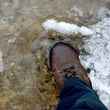
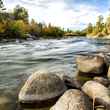
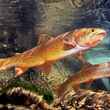



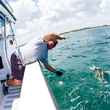




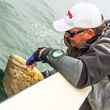









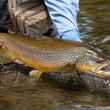



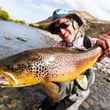
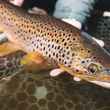
Comments
David Agius replied on Permalink
Contact CNN and ask them to do a TV Show Storyabout this.
Try to contact Anderson Cooper.
Pages